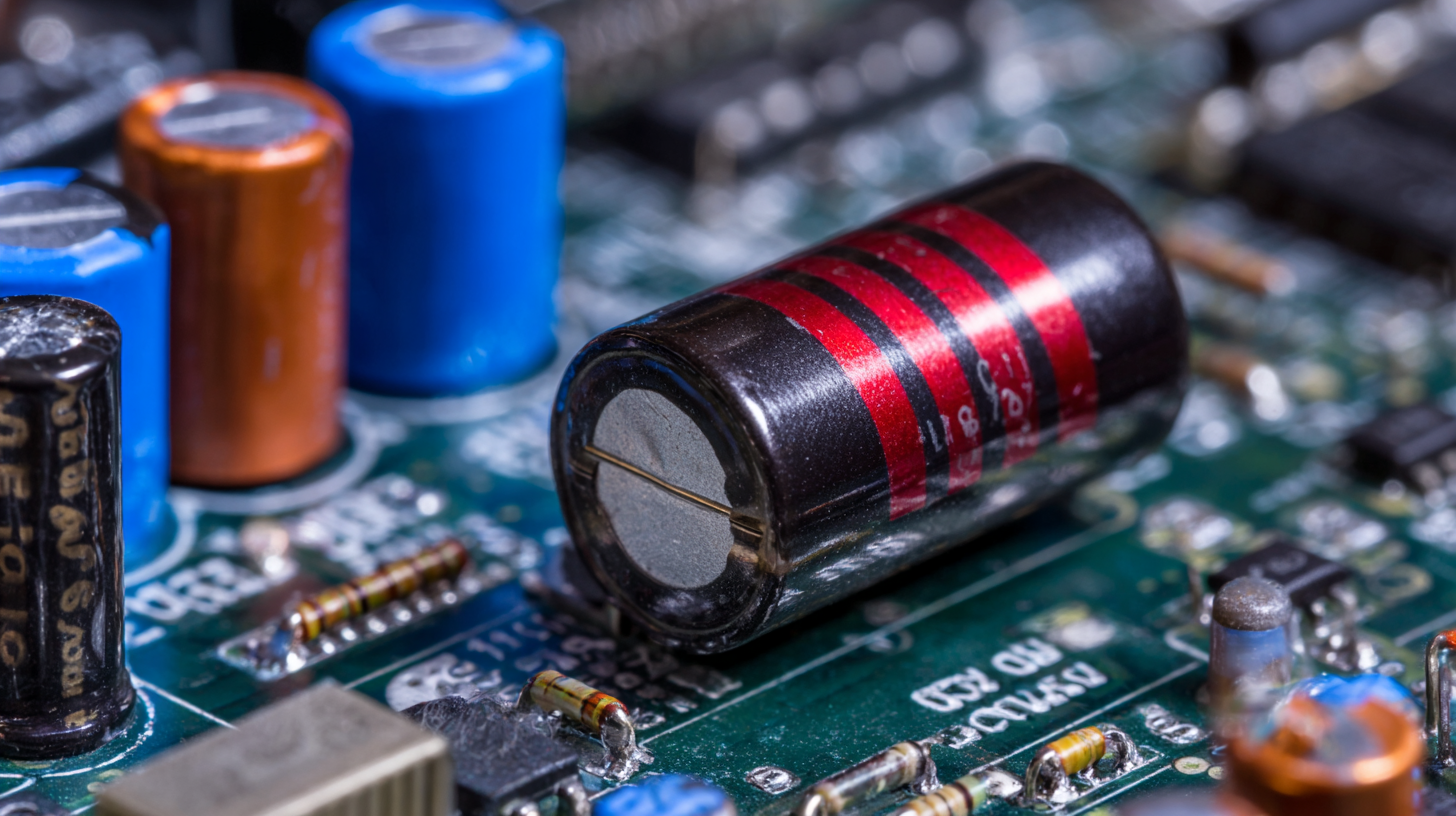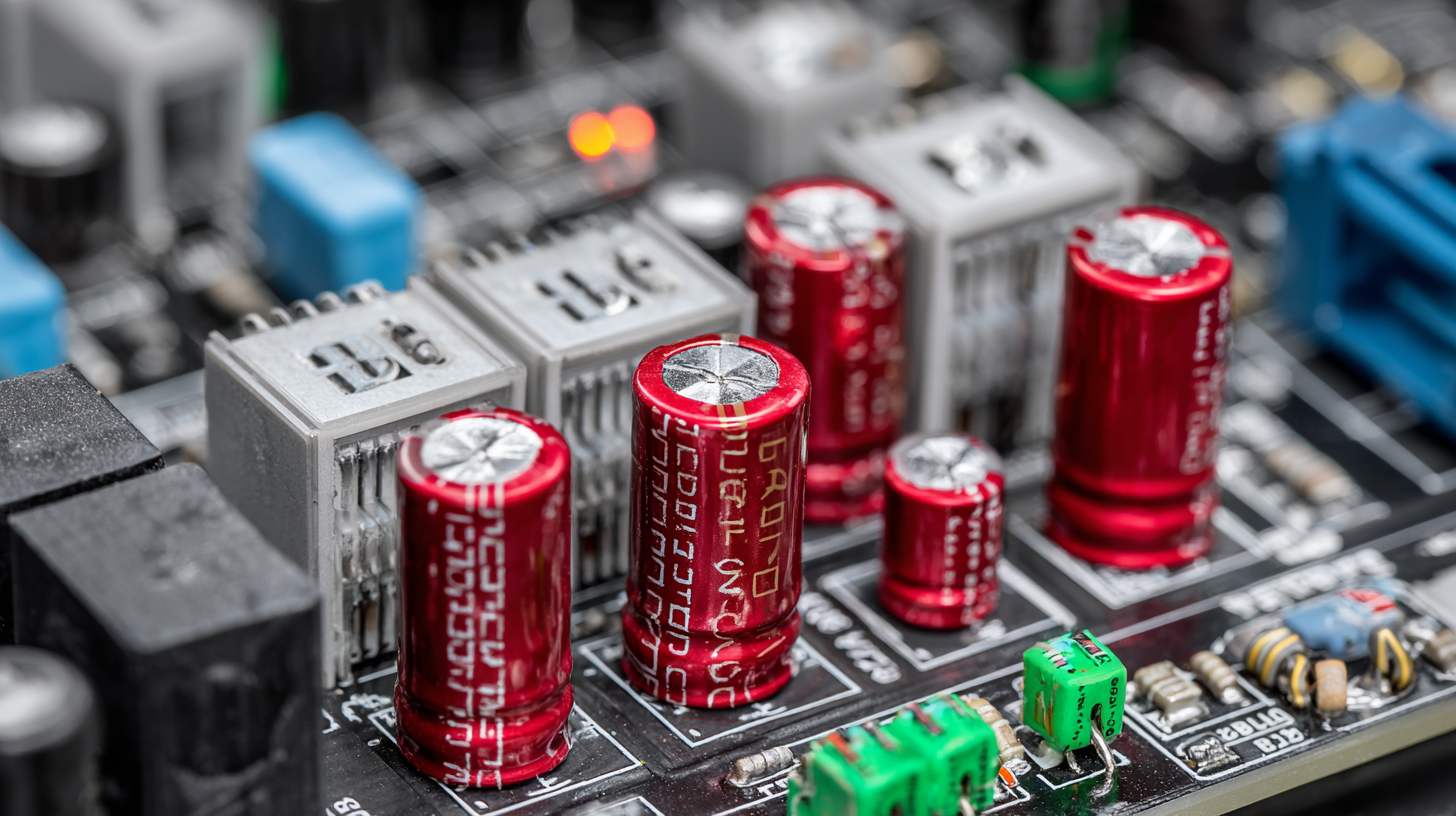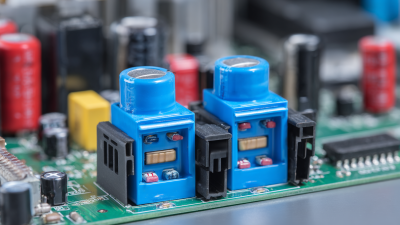10 Essential Tips for Optimal Circuit Protection You Must Know
In today's increasingly electrified world, efficient circuit protection has become a critical component in safeguarding electronic devices and systems. According to a report by MarketsandMarkets, the global circuit protection market is expected to grow from $5.1 billion in 2020 to $7.1 billion by 2025, reflecting a robust annual growth rate driven by the rising demand for advanced electronics. As technology continues to evolve, the need for reliable circuit protection solutions that can prevent damage from overcurrents, surges, and short circuits is paramount.

Expert opinions underline the significance of these protective measures. Dr. Emily Chan, a recognized authority in the field of electrical engineering and circuit protection, emphasizes, "Implementing effective circuit protection strategies not only enhances the longevity of devices but also ensures safety in increasingly complex electrical environments." Her insights echo the sentiment within the industry about the indispensable role that circuit protection plays in the reliability and safety of modern electronic systems. As we delve into the ten essential tips for optimal circuit protection, we will explore strategies that not only meet but exceed current safety standards and support the continuous advancement of technology.
Understanding the Importance of Circuit Protection in Modern Electronics
In today's world, where electronics are an integral part of daily life, understanding circuit protection is crucial for ensuring the longevity and reliability of devices. Circuit protection not only prevents damage from overcurrent and voltage spikes but also enhances the safety of both users and equipment. As electronics become more sophisticated, the importance of incorporating effective protection mechanisms cannot be overstated.
One essential tip for optimal circuit protection is to carefully select the appropriate fuses or circuit breakers for your specific application. Choose components that can handle the expected current load while providing rapid response in the event of a fault. Additionally, it is vital to integrate surge protection devices into your circuits to safeguard against voltage transients caused by lightning strikes or power surges.
Regularly testing and monitoring your circuit protection systems is another key practice. Implementing periodic assessments can help identify any wear or degradation in protective elements, ensuring they function correctly when needed. By prioritizing circuit protection, you can enhance the overall performance, efficiency, and safety of modern electronics.
Key Types of Circuit Protection Devices: An Overview for 2025
In 2025, understanding the various types of circuit protection devices is essential for ensuring the safety and reliability of electrical systems. With the projected growth of the global DC circuit breaker market from $5.39 billion to $9.13 billion by 2032, it’s evident that stakeholders are increasingly prioritizing circuit protection as technology advances. Circuit breakers, surge protectors, and residual current devices (RCDs) are pivotal in mitigating electrical hazards, safeguarding both appliances and users from potential failures or overloads.
Among these devices, DC circuit breakers play a crucial role in managing direct current systems, especially as renewable energy sources like solar power become more prevalent. Their effectiveness in interrupting electrical faults before they escalate can significantly enhance the safety of installations. Furthermore, as the industry evolves, it is vital for professionals to stay informed about the latest advancements and best practices in circuit protection to optimize performance and compliance with safety standards.
10 Essential Tips for Optimal Circuit Protection
This bar chart represents the effectiveness of different circuit protection devices rated on a scale from 1 to 10. As seen in the chart, circuit breakers and RCBOs tend to be the most effective options for protecting circuits.
Best Practices for Selecting the Right Circuit Protection Solutions
Selecting the right circuit protection solutions is crucial for preventing electrical failures and ensuring system reliability. According to a report by MarketsandMarkets, the global circuit protection market is projected to reach $30.64 billion by 2025, driven by increasing demand for reliable and efficient power management systems. This trend underscores the importance of implementing best practices in circuit protection design.
One essential consideration in circuit protection is understanding the specific application requirements. Different environments and usage scenarios may require distinct types of protection devices such as fuses, circuit breakers, or surge protectors. A comprehensive study by the National Electrical Manufacturers Association (NEMA) highlights that improper selection of circuit protection can lead to significant downtime, with repair costs averaging $1 million for industrial plants. Therefore, assessing factors like load conditions, voltage levels, and potential fault scenarios is critical in selecting appropriate devices that offer optimal protection and performance.
Additionally, staying informed about advancements in circuit protection technology is essential for making informed decisions. For instance, the integration of smart technologies into circuit protection solutions allows for real-time monitoring and predictive maintenance, significantly enhancing system reliability. The International Electrotechnical Commission (IEC) reports that adopting these innovations can reduce equipment failure rates by up to 30%. By prioritizing informed selection and understanding technological advancements, businesses can greatly improve their circuit protection strategies and maintain efficient operations.

Common Mistakes to Avoid in Circuit Protection Design
When designing circuit protection systems, avoiding common mistakes can significantly enhance reliability and performance. One critical error is underestimating the importance of selecting the right components. Many engineers may choose generic fuses or circuit breakers without fully understanding the specific demands of their application, leading to inadequate protection. It's essential to evaluate each component's ratings and characteristics, ensuring they align with the operational conditions and potential fault scenarios.
Another frequent oversight involves neglecting to account for environmental factors. Many designs fail to consider issues such as temperature fluctuations, humidity, and dust, which can affect the efficacy of protective devices. Additionally, improper layout and placement of protective components can result in increased inductance and resistance, compromising their function during fault conditions. Designing with these considerations in mind ensures optimal performance and longevity of the circuit protection system.
10 Essential Tips for Optimal Circuit Protection You Must Know - Common Mistakes to Avoid in Circuit Protection Design
| Tip | Description | Common Mistakes |
|---|---|---|
| 1. Understand Load Requirements | Assess the maximum load to select appropriate protection devices. | Overrating protection devices based on average load. |
| 2. Choose the Right Fuse | Select fuses based on application and environmental conditions. | Using standard fuses without considering specific needs. |
| 3. Implement Surge Protection | Incorporate surge protectors to shield circuits from spikes. | Neglecting protection for sensitive equipment. |
| 4. Plan for Heat Dissipation | Ensure proper ventilation around protective devices. | Ignoring heat effects on protective components. |
| 5. Regular Testing and Maintenance | Regularly test protection devices to ensure functionality. | Forgetting about routine maintenance checks. |
| 6. Use Proper Circuit Breakers | Install appropriate circuit breakers for different loads. | Using one type of breaker for all applications. |
| 7. Ensure Compatible Components | Verify compatibility of protection devices with circuit components. | Mixing incompatible components that can fail. |
| 8. Consider Environmental Factors | Assess environmental conditions affecting circuit operation. | Ignoring humidity, temperature, and dust levels. |
| 9. Follow Electrical Codes | Adhere to local electrical codes for safety and reliability. | Disregarding code requirements which can lead to hazards. |
| 10. Educate Yourself and Staff | Keep updated on best practices and new technologies. | Failing to train staff on circuit protection methods. |
Future Trends in Circuit Protection Technologies and Their Implications
The landscape of circuit protection technologies is evolving rapidly, driven by innovations in materials and increased demand for efficiency in electronic devices. According to a recent report by MarketsandMarkets, the global circuit protection market is projected to reach $6.5 billion by 2025, growing at a CAGR of 7.3% from 2020 to 2025. This growth is primarily fueled by the rise of smart devices and renewable energy systems, which necessitate more sophisticated and reliable circuit protection solutions.
One notable trend is the integration of advanced semiconductor technology into circuit protection components. Devices such as resettable fuses and over-voltage protectors are becoming more compact and efficient, enhancing their performance in high-density circuit environments. Furthermore, the adoption of artificial intelligence (AI) in circuit protection systems is on the rise, allowing for smarter fault detection and response mechanisms. A report by Transparency Market Research highlights that AI-driven circuit protection technologies are expected to revolutionize the industry by minimizing downtime and reducing repair costs, making them a critical component in future electronic design and manufacturing strategies.

Related Posts
-

How to Choose the Right Circuit Protection Solutions for Your Devices
-

Essential Guide to Circuit Protection: Safeguarding Your Electronics from Overload Risks
-

Understanding Challenges Faced with Electric Breaker Switches in Modern Applications
-

10 Essential Tips for Surge Protection: Protect Your Electronics with 99% Effectiveness!
-

Why Surge Protection is Essential for Your Home and Business Safety
-

A Comprehensive Guide to Understanding Molded Case Circuit Breakers in Industrial Applications








